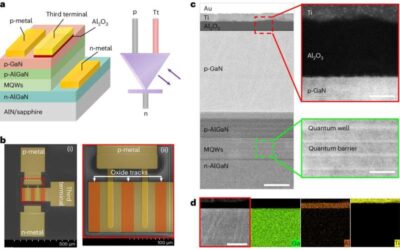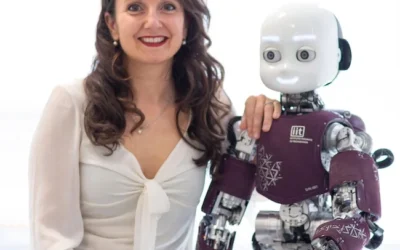In recent years, electronics engineers have been trying to design increasingly sophisticated transistors that can be scaled down to smaller sizes. Given the limitations of conventional silicon-based field effect transistors (FETs), some teams have been experimenting...
Engineering
Floating photovoltaics could limit Africa’s future reliance on hydro-generated energy
Floating photovoltaics (FPV), also known as floating solar farms, are photovoltaic systems that can be deployed on the sea's surface or on other bodies of water. While their environmental impact is still the topic of debate worldwide, these systems could be highly...
A promising three-terminal diode for wireless communication and optically driven computing
Two-terminal devices are electronic components connected to electrical circuits via two electrical terminals. Although these components are the key building blocks of most existing devices, they can limit a system's performance and functions.
A miniature wireless robot that can effectively move through tubular structures
Robots have already proved to be promising tools to complete complex and demanding maintenance tasks. While engineers have developed a wide range of robots that could help to maintain and repair infrastructure, many of these robots need to be plugged into external...
A six-armed robot for precision pollination
Over the past decades, dozens of animal species have become extinct, while thousands of others are now at risk of disappearing. Endangered species include various pollinators, including bees and some types of moths, butterflies, and flies.
A dexterous four-legged robot that can walk and handle objects simultaneously
Four-legged robots, also known as quadrupedal robots, have advantageous characteristics, including the ability to rapidly walk on challenging terrains and keep a low center of gravity. Some four-legged robots can also manipulate objects in their surroundings, yet this...
A rimless wheel robot that can reliably overcome steps
Robots with wheels could potentially navigate a variety of indoor and outdoor environments, traveling for longer distances and with fewer risks of losing balance. While some wheeled robots have achieved very promising results in recent years, most of them are unable...
A fusion SLAM system that enhances the sensing and localization capabilities of biped climbing robots
Climbing robots could have many valuable real-world applications, ranging from the completion of maintenance tasks on roofs or other tall structures to the delivery of parcels or survival kits in locations that are difficult to access. To be successfully deployed in...
Exploring the resilience of the Texas power grid against extreme weather conditions
The Gulf Coast of the United States is often hit by tropical cyclones (TCs), hurricanes and other extreme weather phenomena, which can cause widespread electricity outages. Climate change and global warming are expected to increase the risk of these events occurring,...
A Q&A With Renowned Neuromorphic Chip Designer Chiara Bartolozzi
For our final feature celebrating Women’s History Month, we interviewed Chiara Bartolozzi, a senior researcher moving the needle in neuromorphic engineering.










